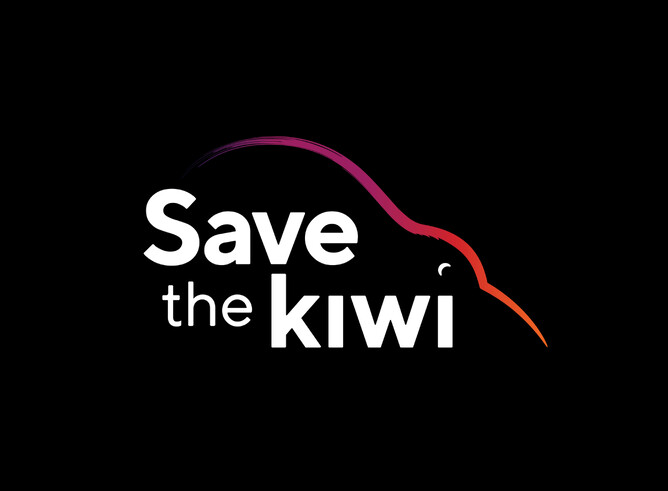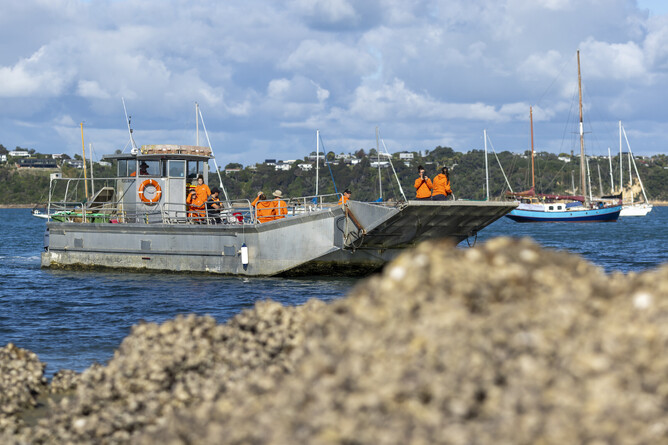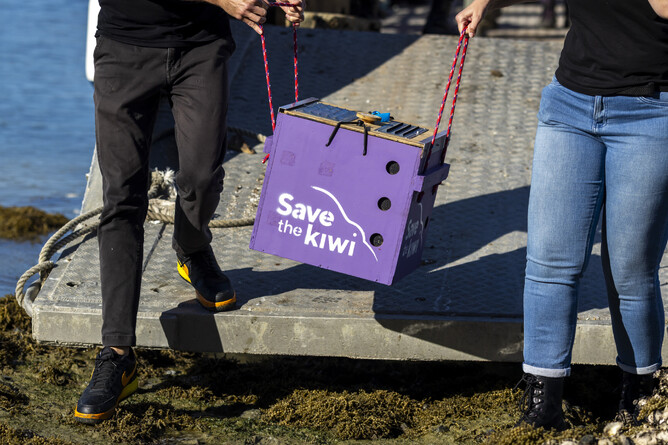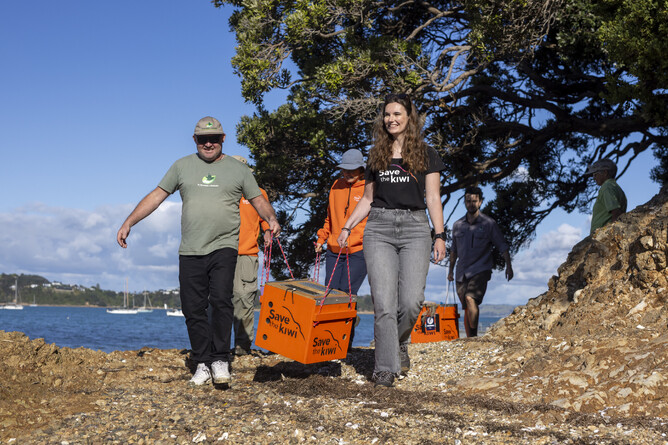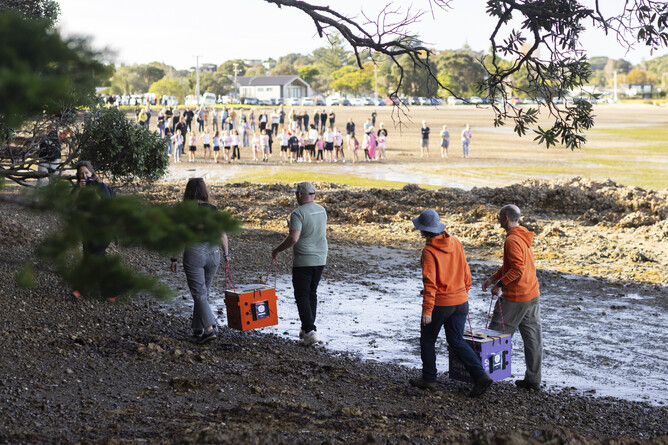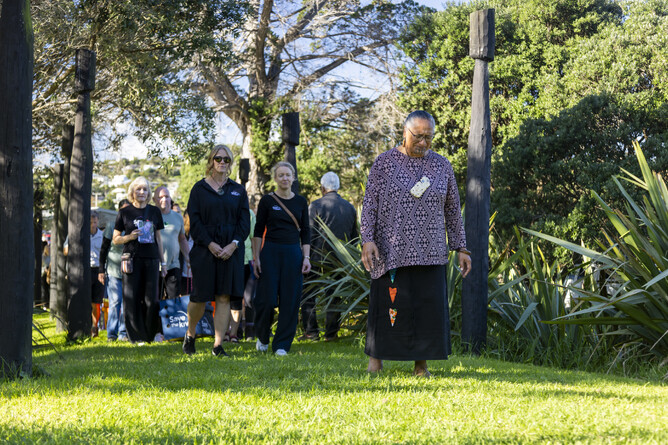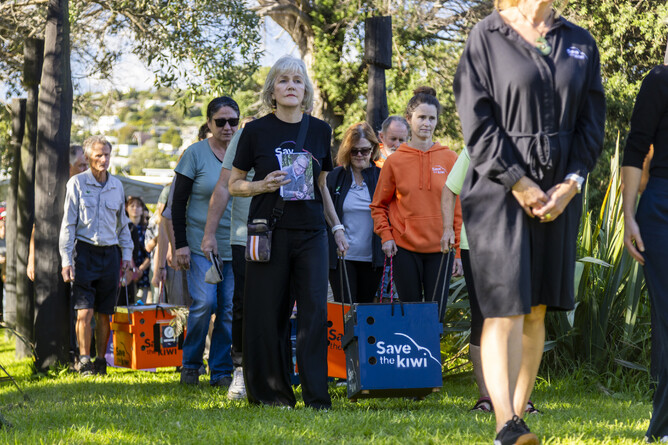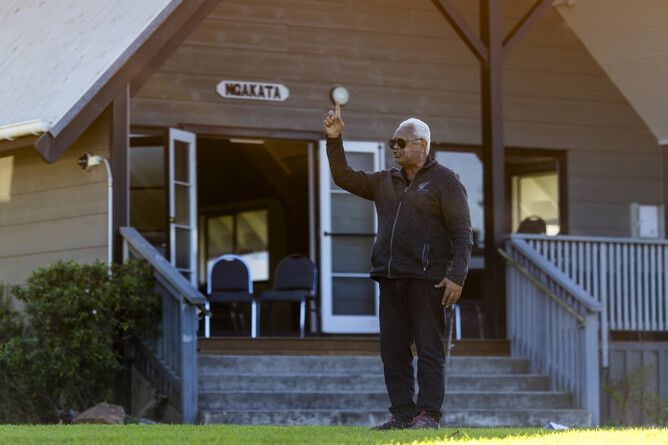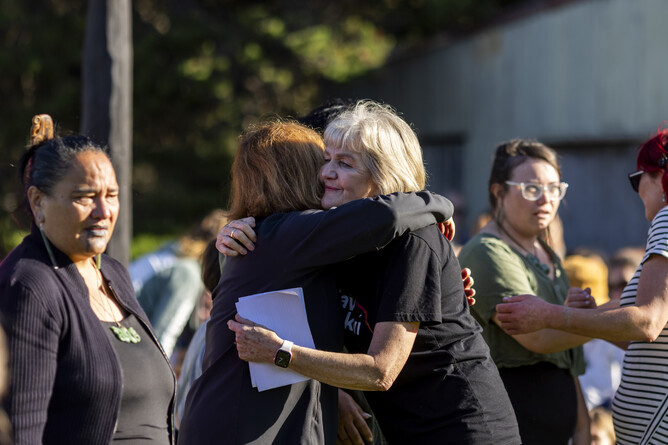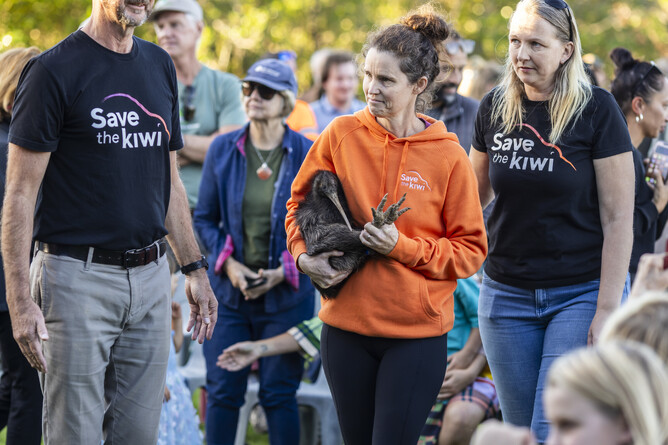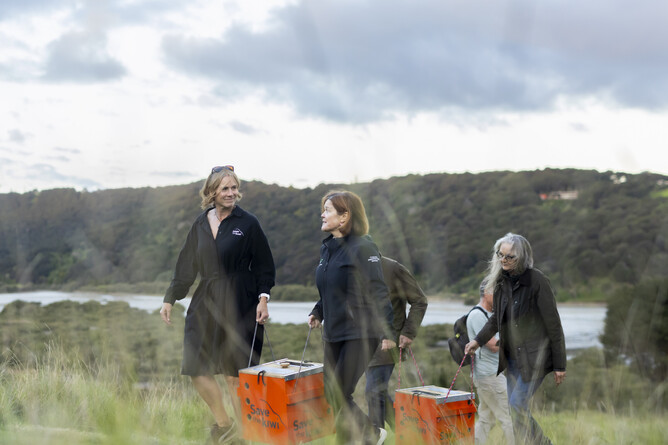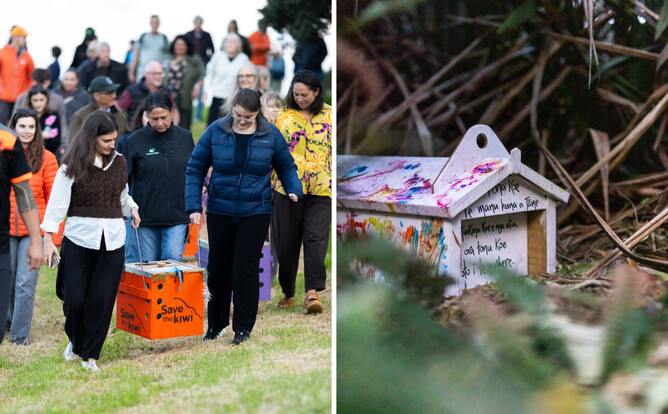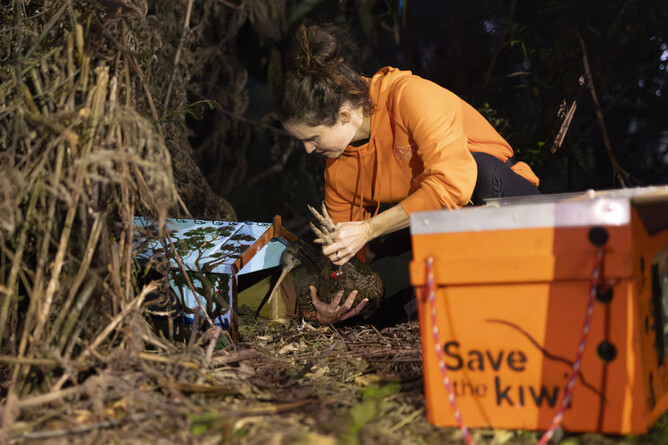In mid-May we were delighted to be among a group of Waiheke Islanders gathered at Piritahi marae, overlooking Blackpool Beach in Te Huruhi Bay.
A small, grey barge rounded Kennedy Point and excited chatter broke out on the ātea and among the many onlookers on the beach. A dad pointed to the boat, showing his daughter who squealed with childish excitement. And a woman next to him called out, her eyes damp and her voice catching with emotion: “They’re back. They’ve come back.”
Technically, we will never know if kiwi ever lived on Waiheke. What we can say is that they haven’t been present since humans started keeping records of such things. But at that moment, on that spot, it seemed wrong and out of place to deny the essence of her statement. Emotionally, at least, these taonga were returning – finally – to Te Motu-ārai-roa.
They were back!
In 1964 the New Zealand Wildlife Service released 14 kiwi onto Pōnui Island, adjacent to Waiheke, following a request from landowner Peter Chamberlin. Today Pōnui is home to an estimated 1,500 North Island brown kiwi.
The fact that the kiwi population on Pōnui is thriving to this extent has given the landowners, who have a deep sense of kaitiakitanga, confidence to have some of these manu find a new home on Waiheke. It’s a wonderful kiwi conservation / species restoration success story. And a perfect example of how long-term species restoration works and how successful it can be.
So, 61 years after kiwi were introduced onto Pōnui, on that sunny Friday afternoon in mid-May, 10 of their progeny were transferred gently from the barge onto Waiheke soil. Safe in their wooden transfer boxes, stuffed with fern fronds and leaf litter from their former home to keep them cool and comfortable.
These 10 birds, six females and four males, were not only the first kiwi to be introduced to Waiheke – they were also the first to be reintroduced to any part of urban Auckland. Proving that it is indeed possible - with a lot of care, dedication, effort and commitment – to bring our national icon from endangered to everywhere.
They are the first of several dozen more founder birds from Pōnui set to make their way over to Waiheke in coming years.
The journey to get to this point had been a long, tough one for one Waiheke whanau in particular.
Save the Kiwi trustee Jennie Fenwick, along with her late husband Sir Rob, has owned land on Waiheke Island’s Te Matuku Peninsula for more than 30 years. The Fenwicks have long been great environmental advocates and the family has carried out extensive predator control on their land with the intention of creating a habitat where native wildlife can thrive.
In particular, it was always a dream of Sir Rob’s to introduce kiwi to Waiheke, and Te Matuku Peninsula was identified as a potential kiwi release site.
Following Sir Rob’s death in 2020, Jennie continued this vision. While a portion of the Fenwicks’ land was sold, all landowners committed to maintaining the conservation and intensive predator control that had been undertaken over the previous three decades.
This predator control, both on Te Matuku Peninsula and across the wider island, has been instrumental in turning the Fenwicks’ vision into reality. In addition to that carried out on Te Matuku Peninsula by the family, local charitable trust Te Korowai o Waiheke has been working since 2019 to eradicate stoats from the entire island. Its ambition is to turn Waiheke into the world’s first predator-free urban island. Only a small number of these predators now remains on the island thanks to Te Korowai o Waiheke’s extensive work.
The work that the Fenwick family has carried out on Te Matuku Peninsula, Te Korowai o Waiheke’s war on stoats, and other eradication work happening on the island have combined to create a solid predator control baseline and a habitat where kiwi can thrive.
With this in place, Save the Kiwi felt able to start the process of engaging with elements of the Chamberlin family on Pōnui Island, the Department of Conservation, Ngāti Paoa, Ngāi Tai ki Tāmaki and the wider Waiheke community, to bring the dream to life.
Reaction proved overwhelmingly positive across the board. Many community meetings were held to ensure that residents were supportive, understood what it would mean, and had a chance to air their concerns and hear the responses.
In addition to the community meetings, responsible dog ownership and kiwi avoidance training workshops were held on the island in advance of the release, and were well-attended.
With all the leg-work, paper-work and ground-work now in place to enable the release of kiwi at Te Matuku Peninsula, the process of catching the 10 founder members of the soon-to-be brand-new Waiheke kiwi population began…
Save the Kiwi handlers and certified kiwi detection dogs worked Pōnui Island late on Thursday 15 May and early on 16 May to catch the 10 adult ‘pathfinder’ birds.
They were placed carefully in their transfer boxes, cushioned with vegetation, and brought over to Blackpool Beach in the barge. Fittingly, this was helmed by David Chamberlin, son of Peter Chamberlin – the man responsible for establishing the Pōnui Island kiwi population in the 1960s.
A mix of Save the Kiwi staff, volunteers, community representatives and onlookers carried the transfer boxes along the beach – two people to a box. A large crowd had gathered below the marae to watch the historic arrival and lined the route up to the entrance to Piritahi marae, which overlooks the beach and the bay.
The weather gods were smiling on us; birds and manuhiri were bathed in autumnal sunshine as they were called onto the marae by Ngāti Paoa. The slow walk from the waharoa to the ātea, with the call of the kaikaranga ringing out across the grounds, felt especially heavy with emotion. As the choked-up lady had said, it did indeed feel like a taonga was being restored.
Following karakia and speeches, including a poignant tribute by Jennie Fenwick to the contribution to this kaupapa of her late husband, Sir Rob, Save the Kiwi board member Ruud Kleinpaste called for hush. In the expectant silence several birds were removed carefully from their boxes by Save the Kiwi handlers, who walked them around – each trailed by an excited gaggle of children.
By now the shadows were growing long and it was time to take the birds to their ‘forever home’ on the Te Matuku Peninsula, a remote piece of native bush at Waiheke’s eastern end and one of the most isolated corners of the island.
There, following karakia, waiata and mihi whakatau from Ngāti Paoa, the birds were released into two separate areas, near hand-painted whare decorated by Waiheke school-children. As darkness fell, they were left in peace to explore the whare, the bush and their new spaces … and get on with their day.
The Jenkins Foundation is proud to be able to support the work of Save the Kiwi and contribute to the establishment of a viable population of kiwi on Waiheke. This is important mahi undertaken by a small group of New Zealanders dedicated to the task of bringing kiwi from endangered to everywhere. Kia kaha!
